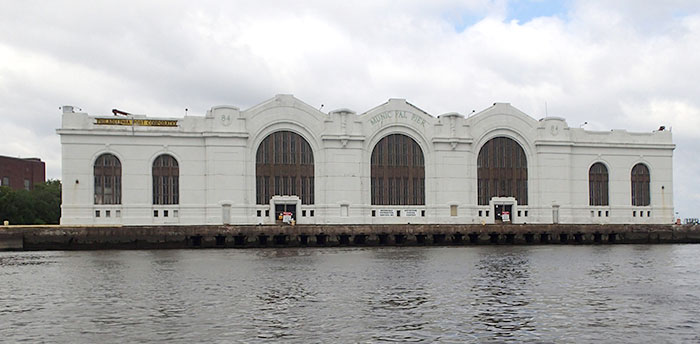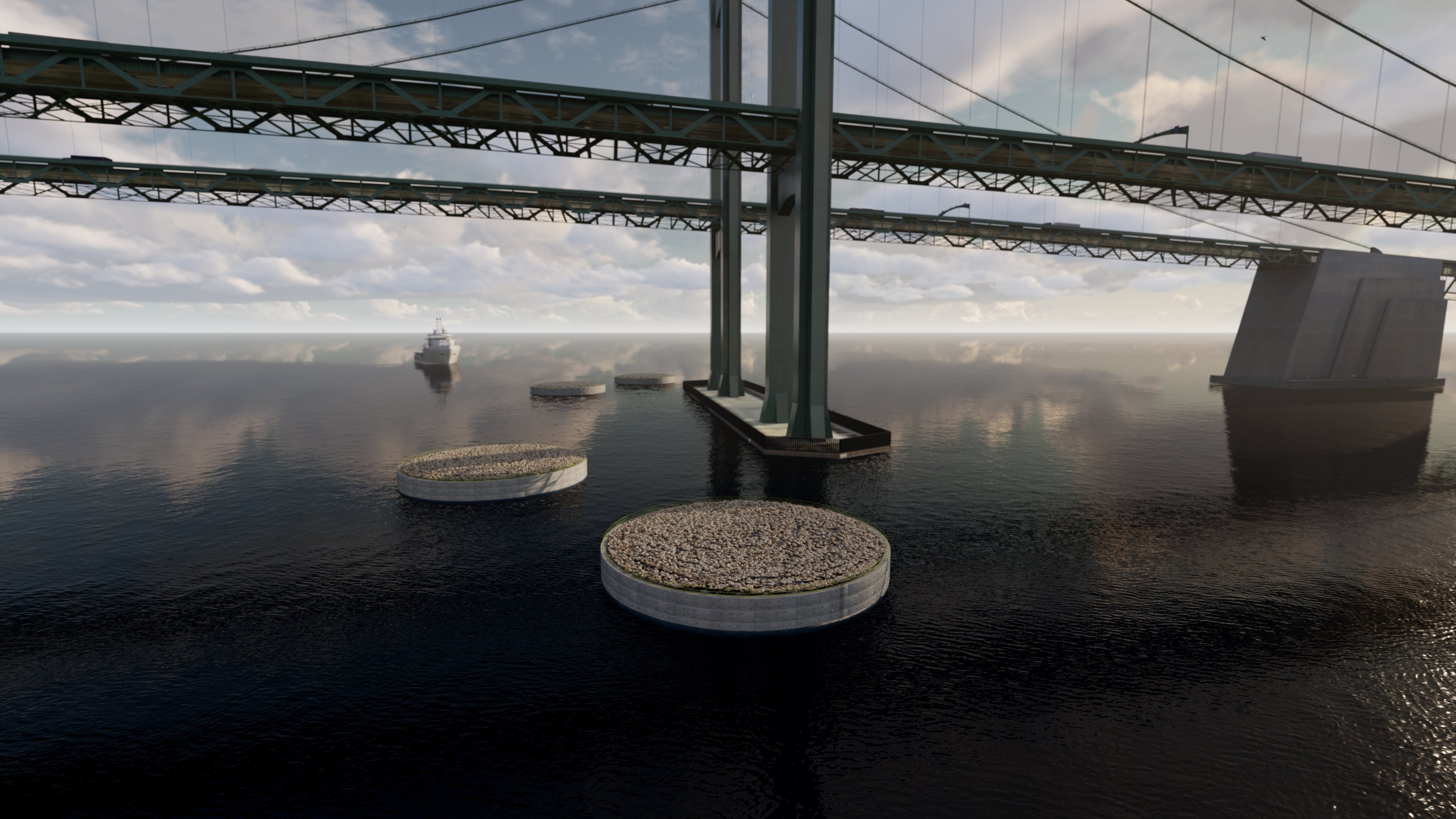Pro Tips
Surveys
An effective laser scanner should have an accuracy of at least 1/16” at 1000 feet.
A laser scanner cannot scan in the rain or fog due to droplets in the air that will interfere with the laser and affect the results. The laser scanner can scan in a breeze and low winds, but if the wind is heavy enough to move the laser scanner, the movement will affect the data.
An effective laser scanner should have a range of at least 1000 feet. However, line of sight is important. If an object is blocked, the laser scanner will not pick up the image.
Slips, trips, and falls from the scanning equipment and wires are safety concerns that are commonly associated with the laser scanning process. Also, the laser scanner is not intrinsically safe; therefore, any flash or explosion concerns should be addressed.
Single-beam hydrographic surveys are good for shallow to mid-water depths. Multibeam hydrographic surveys are good for mid to deep-water depths. A multibeam hydrographic survey can serve two purposes: berth clearance and condition surveys.
Most dock facilities, both public and private, have requirements for periodic hydrographic surveys. The frequency of these scans can be dictated by the owner of the facility or federal, state, or municipal agencies. In the absence of these requirements, it is advisable to check the depth of your dock using single or multibeam scanning sonar once every 1-3 years depending on the silting conditions at your site.
Most dock facilities, both public and private, have requirements for periodic underwater scans to check for obstructions. The frequency of these scans can be dictated by the owner of the facility or federal, state, or municipal agencies. In the absence of these requirements, it is advisable to check the depth of your dock using scanning sonar once every 1-3 years.
Most dock facilities, both public and private, have requirements for periodic dive inspections to check the underwater condition of your berth structures. The frequency of these inspections can be dictated by the owner of the facility or federal, state, or municipal agencies. In the absence of these requirements, it is advisable to perform dive inspections using certified hard-hat divers once every 1-3 years.
Single beam surveys are adequate for your required periodic dredge depth soundings. However, for a more complete picture of the topography of the floor of your berthing area, consider using a multibeam survey.
Due to the nature of the sonar cone produced by a multibeam scan, these scans only begin to offer data that is superior to a single beam scan in water depths over 15ft.
There are many FAA restrictions on UAV flights; however, the most relevant restriction has to do with the fight proximity to an airport.
Typically, wind is not a major concern for UAV flights and surveys. Reflecting sunlight and rain have a much more detrimental effect on UAV flights and survey data.
Due to battery life, it is recommended that all UAV flights and surveys stay within a one (1) mile radius of the UAV operator.
A certified commercial hardhat diver or dive refers to dive equipment, dive training, and dive procedures that are compliant with standards set by a reputable professional diving association like ADCI (Association of Diving Contractors International).
Most industrial and commercial marine facilities require that those conducting dive operations on their property be certified hardhat divers from an agency like ADCI (Association of Diving Contractors International).
The ASCE (American Society of Civil Engineers) Waterfront Facilities and Inspection Manual No. 130 provides industry-accepted requirements for dive inspections and dive inspection reports.
To conduct a proper ASCE-approved dive inspection, the team usually includes 3-5 certified hardhat divers, a dive supervisor that is a professional engineer, a properly-equipped dive vessel, and a surface-supplied air delivery system.
Divers use underwater cameras to document the inspection process. Ultrasonic Thickness (UT) Instruments are used to measure thickness of steel structures.
Environmental
Dredging, disturbance of wetlands, waterfront development, pile driving, dock construction, bulkhead installation or repair, shoreline stabilization, outfalls installation, discharge operations, water intake systems installation, placement of fill in any body of water, and similar activities will probably require some level of permitting.
The time it takes to secure a permit when doing in-water construction on a navigable waterway depends on the nature of the work and the location of the project, but as a general rule you should allot 6-9 months for the drafting and securing of local, state, and federal permits.
There are ways to fast track the permitting process. Hiring an environmental and permitting specialist, with an expertise in the permitting process and good relationships with the permitting agencies, will ensure the highest chances that the permitting process will take as little time as possible.
For permitting purposes, “In-water work” means any work that takes place below the mean high-water line. In many cases, activities conducted over water would also require a permit.
Most permits require a conceptual design to be submitted with the permit application. Therefore, a permitting consultant should be brought in during or before the conceptual design phase.
Federal, state, and municipal permitting agencies require the creation, restoration, or preservation of wetlands to compensate for the loss of wetlands due to commercial operations and construction.
Federal law requires mitigation for permanent placement of fill within wetlands or the removal of wetlands to create open water. An experienced environmental consultant can help you navigate all wetland mitigation requirements dictated by local, state, and federal laws or ordinances.
Wetland mitigation requirements differ from location to location; however, mitigation ratios can range from 2:1 for the creation of new wetlands to 27:1 for the preservation of existing wetlands in some areas of the country. An experienced environmental consultant can help you navigate all wetland mitigation requirements dictated by local, state, and federal laws or ordinances.
Environmental sampling for permitting purposes can be done at the same time as geotechnical investigations and can save time and money when done together.
Anyone scheduling for the retrieval and analysis of dredging samples for chemical analysis should assume 6-10 weeks. The process involves developing a sampling plan, submitting the plan to and getting it approved by the required agencies, retrieving the samples, and delivering the samples to the lab and waiting for results.
Activities such as dredge disposal and site remediation require soil samples to be taken prior to beginning construction, usually as a part of the permitting process.
Engineering
While there may be variations in engineering and construction standards based on location, nearly all engineering and construction standards are dictated by or derived from American Standards like ASTM, AISC, and ASCE.
A marine fender system is any material or assembly that is designed and manufactured to absorb the berthing energy of a vessel during docking operations.
A qualified marine engineer should be used to determine the berthing energy of the design vessel(s) and select the most appropriate marine fender to absorb the calculated berthing energy.
Marine engineers use sophisticated software to determine the optimal or acceptable layout for a dock facility by inputting dozens of variables and modeling relevant scenarios for the mooring and berthing operations of the design vessel(s).
Bollards are acceptable for nearly all applications where the vessels being moored are handling non-volatile material. Often, local laws require that quick release hooks be used when handling fossil fuels or other potentially flammable materials.
Having intimate local knowledge of the soil conditions, tidal conditions, environmental regulations, and regional construction capabilities can make a huge impact on the design and materials used in the design of a marine structure.
Initial design or design modifications to Marine Vapor Recovery (MVR) Systems need to be certified by a Coast Guard Approved Certifying Entity not affiliated with the design engineer.
Marine Vapor Recovery systems are required to undergo an Operational Review every five years by a Coast Guard Approved Certifying Entity.
Storage tanks changing from heated service to ambient temperature service in colder climates need to be assessed for brittle fracture failure.
Eccentric reducers are installed in pump suction piping to minimize accumulation of any air or gas bubbles in the suction.
It is good practice to install a check valve at the discharge of every pump.
Pumps should be protected from low flow damage by using recirculation systems, low flow alarms, or other protective methods.
Deteriorating insulation on wiring is the leading cause of arc-producing electrical failures causing arc flash conditions.
Piping systems should be designed and installed with vents at high points and drains at low points and utilize properly designed and installed pipe supports and anchors on piping systems.
Aboveground storage tanks built to American Petroleum Institute (API) 650 standards are required to have periodic external and internal inspections.
Construction Management
Concerns about conflicts of interest in EPCM projects can be addressed by the introduction of an Owner’s Representative, usually a third-party engineering firm, that oversees the project and represents the owner’s interests.
An EPCM team should be secured no later than after the FEED studies have been completed and approved and before detail design has begun.
Within an EPCM team it is advisable that the engineer hire and manage the contractor to maximize the leverage of the engineering firm to enforce sound engineering principles and standards in the construction of the project.
The construction management consultant should be available to be on-site for all crucial project events. This individual should participate in weekly progress meetings and receive construction schedule updates, as well as notifications on deliveries of major materials and components.
Ideally, the construction support consultant should be brought in during the bidding phase to provide technical feedback on the contractor’s approach to the project and provide value engineering options. The construction support firm should be hired no later than immediately after award of the project.
It is critically important for the owner’s representative to have a clearly defined role that is understood by all parties involved in the project. This role could range from simple quality assurance, involving surface analysis of designs and schedules; to a quality control function, reviewing all calculations, plans, and vendor submittals in detail to ensure compliance with the project requirements.
The owner’s representative is not always hired by the facility owner. They may be hired by a tenant who was not involved in the hiring of the project designer or contractor. The owner’s representative is hired by an interested party not sufficiently represented on the project.
The owner’s representative should be brought in as early as possible in the design phase to ensure that the client’s interests are represented at a time when modifications to the project are most practical.
See Our Experience

Philadelphia Regional Port Authority
Pier 80 and 82 Hardware Repairs | Pier 82 and 84 Pile Repairs
Learn more +

Energy Transfer Marcus Hook Industrial Complex
Addition of a New Fire Water Intake System
Learn more +


